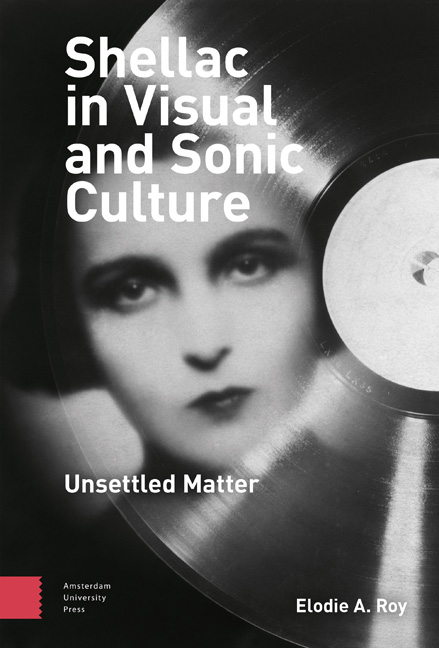Book contents
- Frontmatter
- Contents
- List of illustrations
- Acknowledgements
- Introduction: From material culture to the materials of culture
- 1 Sheen: Early stories and circulation of shellac
- 2 Crackle: Assembling the record
- 3 Mirrors: Phono-fetishism and intersensory visions
- 4 Detonations: Shellac at war
- 5 Shards: Waste, obsolescence, and contemporary remediations
- Conclusion: Sonic sculptures
- Bibliography
- Index
2 - Crackle: Assembling the record
Published online by Cambridge University Press: 17 February 2024
- Frontmatter
- Contents
- List of illustrations
- Acknowledgements
- Introduction: From material culture to the materials of culture
- 1 Sheen: Early stories and circulation of shellac
- 2 Crackle: Assembling the record
- 3 Mirrors: Phono-fetishism and intersensory visions
- 4 Detonations: Shellac at war
- 5 Shards: Waste, obsolescence, and contemporary remediations
- Conclusion: Sonic sculptures
- Bibliography
- Index
Summary
Abstract:
Chapter 2 retraces how shellac progressively and predominantly became a medium of sound in the late nineteenth century, focusing on Emile Berliner's discovery of its sonic properties. The chapter especially focuses on the US where the material was progressively domesticated and ‘Americanised’, to the point of erasing its provenance and premediatic histories. An important aspect of this chapter is that it makes visible the forms of labour entombed in the commodity of the record. It offers a parallel between shellac production in Indian workshops and the work carried out in western pressing plants, notably insisting on the crucial contribution of female labourers in the early phonographic industry.
Keywords: record industry, phonography, Berliner, shellac, labour, mimesis
Chapter 1 introduced the early uses of lac and shellac as visual media. It uncovered a first, pre-mediatic layer in the history of the material, charting the long period before it fully became a ‘medium’ (as well as an organised industry) in the modern sense of the term. In this chapter, I continue to track shellac's transformative journey, examining another layer in the history of the material, and attending to its symbolic-material (re)emergence as a new (sonic) medium in the context of early phonography. This chapter focuses especially on the US where the shellac-based gramophone disc was developed by Emile Berliner in the second half of the 1890s. It asks how this arch-material of culture became distinctly modernised, domesticated and westernised (or even Americanised) through its sociocultural and industrial association with Berliner's gramophone disc. The latter, an easily reproducible media artefact, is often presented as single-handedly and magically ‘pav[ing] the way for the development of a new consumer industry predicated on the mass production of music’. But this technological breakthrough simultaneously marked a moment of erasure. The early visual stories of shellac were largely silenced and discarded as the 78rpm disc began journeying into the lives and imaginaries of millions of listeners. Other stories were encoded – or inscribed – into the material, with previous understandings becoming increasingly faint and inaudible.
- Type
- Chapter
- Information
- Shellac in Visual and Sonic CultureUnsettled Matter, pp. 63 - 102Publisher: Amsterdam University PressPrint publication year: 2023



